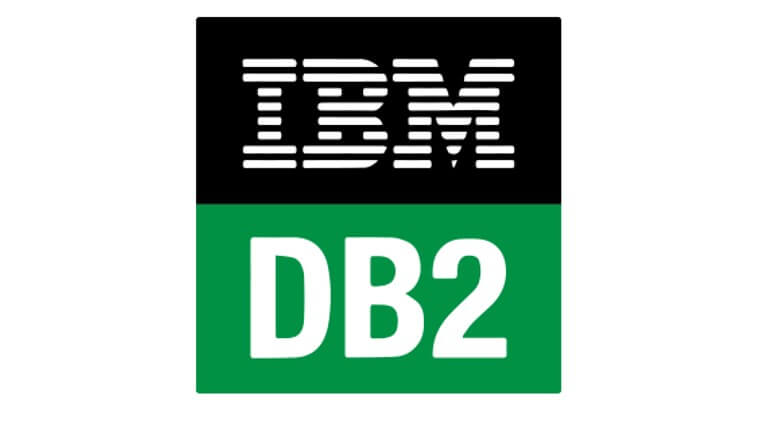Some useful DB2 commands from my experience
DB2 System Commands
- DB2LEVEL — checks version of DB2 installed.
- DB2ILIST — lists all instances installed
- DB2CMD — opens a command line processor
- DB2CC — opens db2 control center
- DB2LICM -l — gets db2 type.
Command Line Processor Commands
- DB2 LIST NODE DIRECTORY — Lists all nodes
- DB2 CATALOG TCPIP NODE DB2NODE REMOTE MACHINE215 SERVER 50000 — catalogs node. In this case, node is db2Node on the machine with name machine215. Port is 50000.
- DB2 LIST DATABASE DIRECTORY — list databases
- DB2 GET DB CFG FOR SAMPLE — get configuration info for the SAMPLE db.
- DB2 CONNECT TO investdb USER myuser USING mypass — connect to db. In this case, database is investdb , user is myuser and password is mypass.
- DB2 DISCONNECT investdb — disconnects
- DB2 LIST APPLICATIONS SHOW DETAIL — shows all running db’s
- DB2 GET DBM CFG — view authentication paramater (e.g. something like server_encrypt)
- DB2 UPDATE DBM CFG USING AUTHENTICATION SERVER_ENCRYPT — alter the authentication mechanism to server_encrypt
- DB2 GET AUTHORIZATIONS — get authorization level.
Database commands via Command Line Processor (CLP)
- DB2 GET DATABASE CONFIGURATION — gets current database configuration
- DB2 VALUES CURRENT USER – – gets the current user
- DB2 VALUES CURRENT SCHEMA — gets the current schema
- DB2 VALUES CURRENT QUERY OPTIMIZATION — get query optimization level.
Schema
- DB2 SELECT SCHEMANAME FROM SYSCAT.SCHEMATA — list all schemas
- DB2 VALUES CURRENT SCHEMA — gets the current schema
- DB2 SET SCHEMA ALEXSCHEMA — set schema
Table
- DB2 LIST TABLES FOR schema_name — list all tables for particular schema
- DB2 LIST TABLES SHOW DETAIL; — show detail about tables
- DECLARE GLOBAL TEMPORARY TABLE — declares a temporary table
- CREATE TABLE MQT AS (SELECT c.cust_name, c.cust_id, a.balance FROM customer c, account a WHERE c._cust_name IN (‘CHATRI’) AND a.customer_id – c.cust_id) DATA INITIALLY DEFERRED REFRESH DEFERRED — Creates a materialized query table. In this case the MQT is based on a join query from the customer and account table.
Tablespaces
- DB2 LIST TABLESPACES SHOW DETAIL — show detail about table spaces
- SELECT * FROM SYSCAT.TABLESPACES; — show what syscat has about tablespaces
- SELECT tbspace, bufferpoolid from syscat.tablespaces; — get tablespace and bufferpoolid
- SELECT TABNAME FROM SYSCAT.TABLES WHERE TBSPACE=2; — Check what TABLES are in tablespace where id = 2.
Constraints
- SELECT * FROM SYSCAT.TABCONST; — Table constraints
- SELECT * FROM SYSCAT.CHECKS; — Colum checks
- SELECT * FROM SYSCAT.COLCHECKS; — Column constraints
- SELECT * FROM SYSCAT.REFERENCES; — Referential constraints
Sequences
- CREATE SEQUENCE STESTRESULT AS INTEGER INCREMENT BY 1 START WITH 1 NO MINVALUE NO MAXVALUE NO CYCLE CACHE 10 ORDER; — Create Sequence starting with 1 which cache 10 values
- SELECT * FROM SYSCAT.SEQUENCES; — Gets systcat info on sequences
- VALUES NEXT VALUE FOR MYSEQ; — Gets next value from sequence myseq
- ALTER SEQUENCE MYSEQ RESTART WITH 11 INCREMENT BY 1 MAXVALUE 10000 CYCLE CACHE 12 ORDER — Changes MySeq sequence
Locksize
- SELECT TABNAME, LOCKSIZE FROM SYSCAT.TABLES WHERE TABNAME = ‘ EMPLOYEES’; —Check locksize which can be tablespace, table, partition, page, row – (usually row).
Bufferpools
- SELECT bpname, npages, pagesize from syscat.bufferpools — get useful buffer pool info.
- SELECT buffer.bufferpoolid, buffer.bpname, buffer.npages, buffer.pagesize, tablespace.tbspace, tablespace.tbspaceid from syscat.bufferpools buffer, syscat.tablespaces tablespace where tablespace.bufferpoolid = buffer.bufferpoolid; — gets buffer pool and corresponding tablespace info.
Indexes
- SELECT * FROM SYSCAT.INDEXES — show all indexes
- SELECT COLNAMES, TABNAME, INDEXTYPE, CLUSTERRATIO, CLUSTERFACTOR FROM SYSCAT.INDEXES WHERE TABNAME = ‘TPERSON’; — some useful columns
Functions
- SELECT * FROM SYSCAT.FUNCTIONS; — check what functions DB has.
SYSDUMMY1 commands
- SELECT CURRENT DATE FROM SYSIBM.SYSDUMMY1; — gets current date.
- SELECT HEX(36) FROM SYSIBM.SYSDUMMY1; — same as VALUES HEX(36)
- SELECT XMLCOMMENT (‘This is an XML comment’) FROM SYSIBM.SYSDUMMY1;
Runstats
- RUNSTATS ON TABLE TAUSER1.TOSUSER FOR INDEXES ALL; — runstats for all indexes
- Checking the last time runstats was run…
- SELECT CARD, STATS_TIME FROM SYSCAT.TABLES WHERE TABNAME = ‘TOSUSER’;
- SELECT NLEAF, NLEVELS, FULLKEYCARD, STATS_TIME, TABNAME, INDNAME FROM SYSCAT.INDEXES WHERE TABNAME = ‘TOSUSER’;
- The following catalog columns can be queried to determine if RUNSTATS has been performed on the tables and indexes:
- If the CARD column of the SYSCAT.TABLES view displays a value of -1, or the STATS_TIME column displays a NULL value for a table, then the RUNSTATS utility has not run for that table.
- If the NLEAF, NLEVELS and FULLKEYCARD columns of the SYSCAT.INDEXES view display a value of -1, or the STATS_TIME column displays a NULL value for an index, then the RUNSTATS utility has not run for that index.
Discover more from naiwaen@DebuggingSoft
Subscribe to get the latest posts sent to your email.

